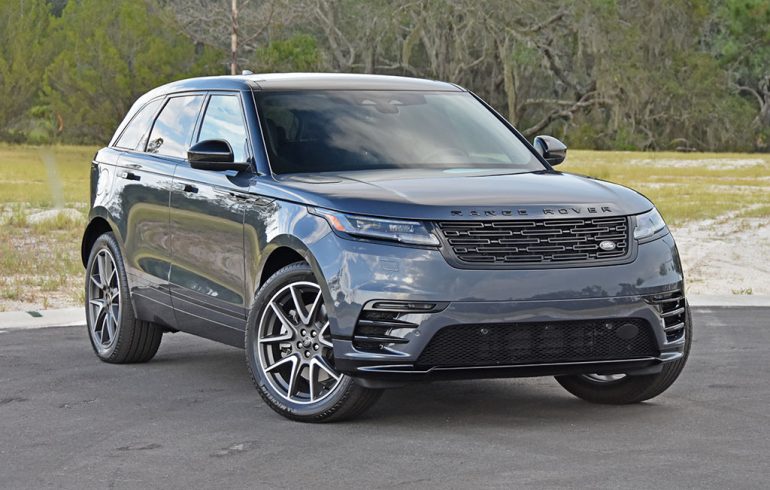
Within the Land Rover family of vehicles, there are several offerings that attempt to give those seeking a luxurious SUV that’s also capable off-road but has respectable on-road performance. When it comes to having something that’s not quite as up the luxury chain as the Range Rover Sport, there’s the perfect alternative in the new Range Rover Velar, which was first introduced as a 2018 model year receiving rave reviews and accolades. Now, 6 years later, the Range Rover Velar receives a slight update with a restyled front, just two powertrain options, and a revamped infotainment system that’s surrounded by a new minimalistic dashboard space.
I’ve always admired the multiple personalities of Land Rover vehicles, and the Range Rover Velar has only added to the spectrum of offering a luxurious SUV that has a hidden all-wheel-drive off-roading agenda that can easily be extracted at the push of a button. Making things a bit simpler for the 2024 model year in more ways than one is the refreshing of the new Range Rover Velar. Now offering just two powertrain options, the Velar makes do with either the base turbocharged 4-cylinder engine with 247 horsepower and 269 lb-ft of torque or a mild hybrid turbocharged inline 6-cylinder found in my test vehicle with 395 horsepower and 405 lb-ft of torque found in the P400 Dynamic SE or P400 Dynamic HSE models. With the more powerful engine, the Range Rover Velar scoots to 60 mph in just 5.2 seconds and feels substantial out on the open road. The mild hybrid part of the equation brings a motor/generator that acts as the starter motor and alternator for a better source of accessory power management and a slight bit of added power to the drivetrain when the motor is running, in addition to recuperating some energy when braking.
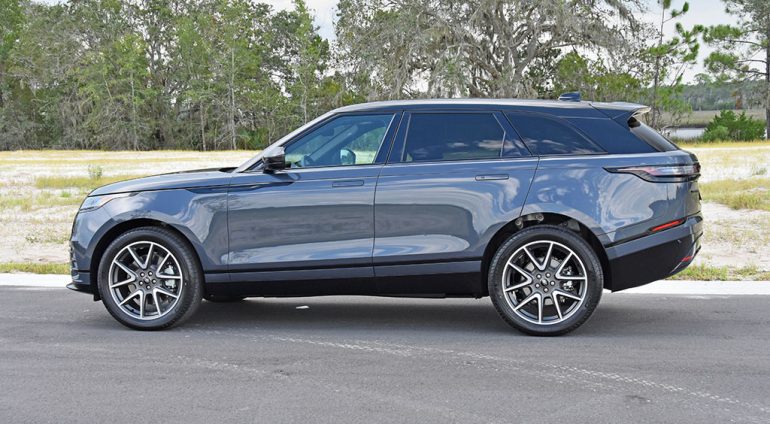
The ride quality is excellent as the adaptive dampers do a good job of managing body movements in the default Comfort drive mode, whereas the Dynamic drive mode firms up the dampers but not to the point of giving you a rough ride quality. With my test vehicle not having the air suspension system, there’s not much of a dynamic change when you select other terrain modes, which is an area where Land Rover vehicles have long been known to shine, leaving you only at the mercy of some of their all-season road tires instead of having off-roading rubber, which on my test vehicle you must contend with stylish 21-inch wheels and tires. Handling tends to be a bit soft in entering turns, and there’s a bit of unwanted front-end lift upon acceleration. The smooth-shifting 8-speed automatic transmission does a good job to land in the optimal gear most times.
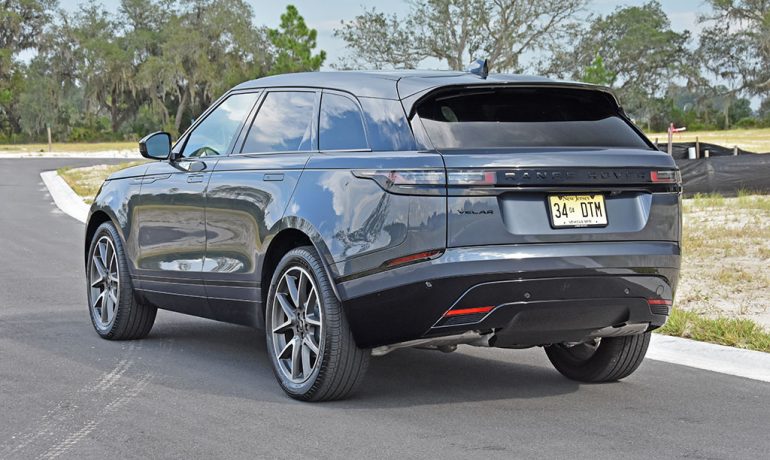
Just like its larger Range Rover Siblings, the Velar offers a plethora of off-road drive modes and can be further enhanced when you equip it with the terrain response 2 system coupled with adjustable air suspension. Those added off-roading modes are legitimately useful in many different situations and can also be used for wading water up to nearly 23 inches.
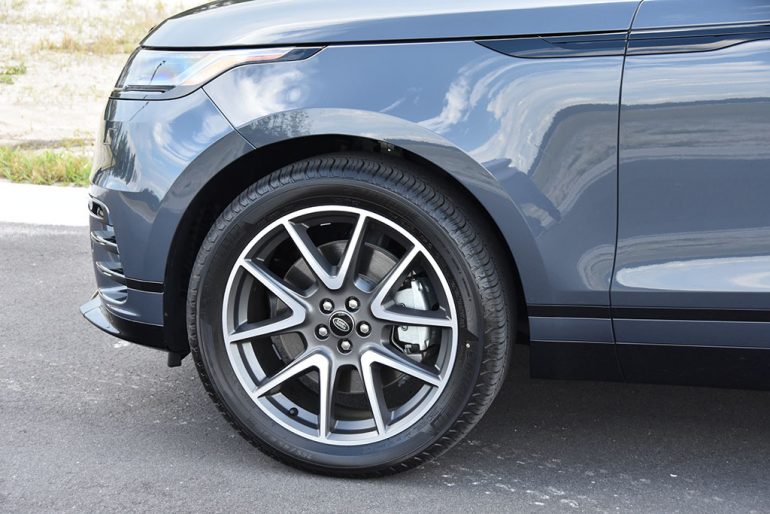
The latest Range Rover Velar with the turbocharged inline 6-cylinder engine is rated at 19 mpg city and 25 mpg highway, which isn’t all that different from the turbo 4-cylinder P250 trim. I noticed a steady 20.6 mpg around town and as high as 25.2 mpg on the highway, which isn’t exactly stellar for a two-row seat midsized SUV.
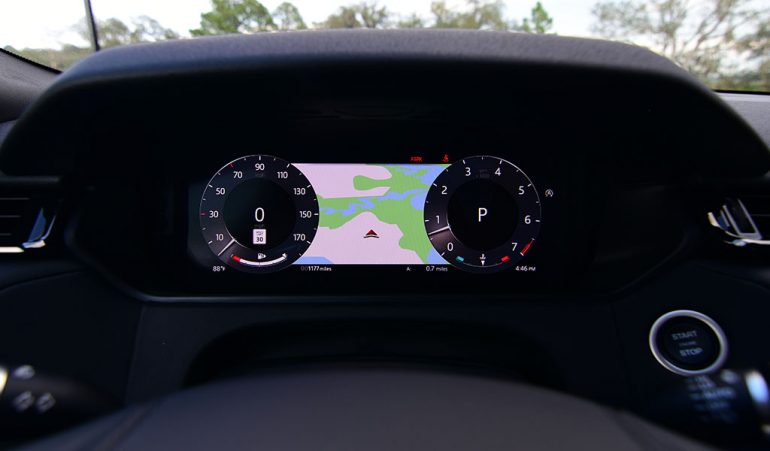
I admired the Range Rover Velar when it was first introduced, bringing us some much-needed upgrades for the Land Rover brand when it comes to technology and its infotainment system. The use of the lower climate control dials and buttons was convenient. However, now, all those controls are gone, leaving a very minimalistic dashboard where all controls and interactions take place through the new 11.4-inch touchscreen Pivi Pro interface. The new system, upon first use, is a little annoying. However, after spending 15 to 30 minutes with the system things start to make sense, somewhat. There’s no physical volume knob on the dashboard where you are required to use a dedicated volume touch area on the screen to slide the control up or down or use the physical scroll knob on the steering wheel. The climate controls are also integrated into the touchscreen interface with dedicated slider areas, which you eventually become acclimated to their operation. Still, I would have liked to have the older physical buttons and knobs for those simple and often-used functions.

There is a pre-drive menu for quickly accessing popular functions, such as disabling the annoying start-stop feature or turning on your heated or ventilated front seats. The integration of wireless Apple CarPlay and Android Auto retains the dedicated functions for the volume and climate control at either side of the slightly curved infotainment touchscreen. Rounding up some of the new tech is an updated 12.3-inch digital gauge cluster that has many configurations for information and display of a live navigation map in many different sizes and positions.
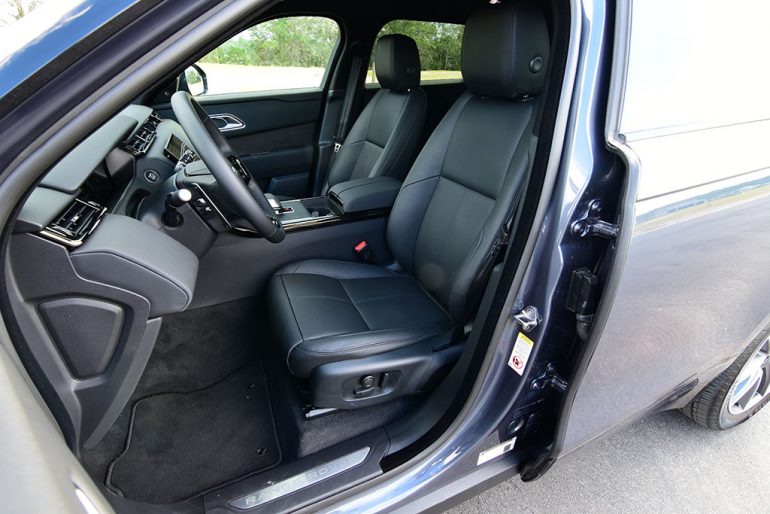
Having the new clean and minimalistic dashboard gives a lot more surface area for materials, where Land Rover utilizes luxurious colors but optionally does away with the traditional leather wrappings replaced with leather-free polyurethane textiles and even wool blend for some seating configurations – where some may view as being more environmentally friendly. The generous use of the the textile material throughout the dashboard looks the proper part for a Land Rover but not as plush as what I used to find in such vehicles using liberal amounts of leather. However, you can still opt for leather if you so choose.
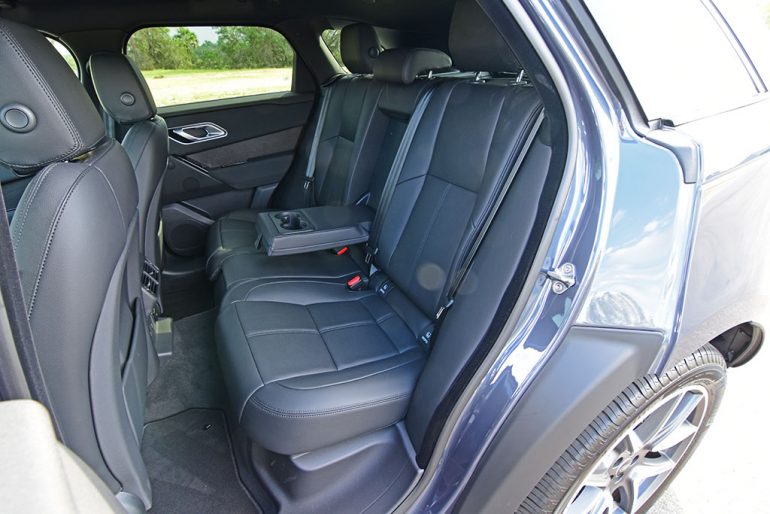
The interior space is on the small side for a midsized luxury SUV in the Range Rover Velar. There’s plenty of front seat adjustment for just enough space for most adults. The rear seats, with outboard seat heating, are also smallish but have just enough space for most adults, provided that the center passenger is small or a child. Cargo room is decent enough with about 34 cubic feet with the rear 60/40-split manually folding seat backs in place. Fold them down and you have just over 70 cubic feet of space all accessed through a power tailgate.
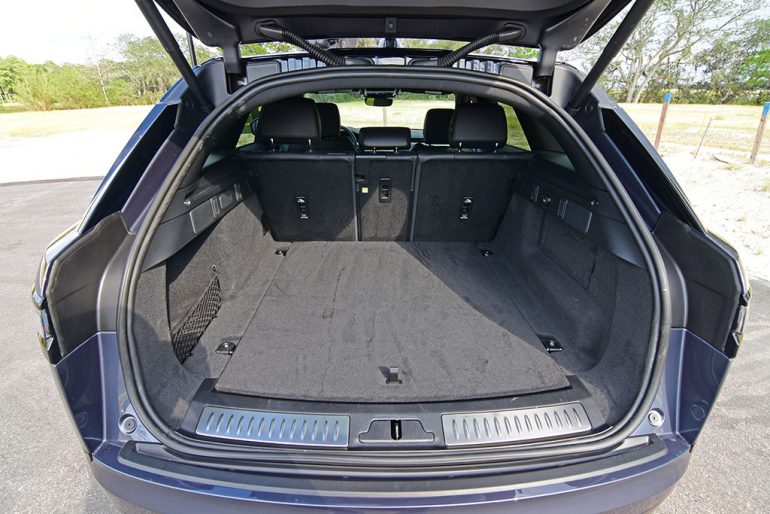
One unique feature that’s long been a noticeable trait for JLR (Jaguar/Land Rover) vehicles is the heated windscreen option, which has visible fine heating elements strung through the front windshield but proves to be very effective for quickly clearing the glass of frost or ice. While the fine heating elements can be seen, they are well worth the slight visual intrusion when you often require clearing your windshield of morning frost, which seems to just take a minute or so to fully clear.
Land Rover includes all the expected active safety features with all new Range Rover Velar models, including automatic emergency braking/forward collision warning, lane-departure warning, lane-keeping assist, blind-spot monitors, and adaptive cruise control system with steering assist, which I found to work well in following lines and keeping the vehicle centered and following somewhat aggressive curves.
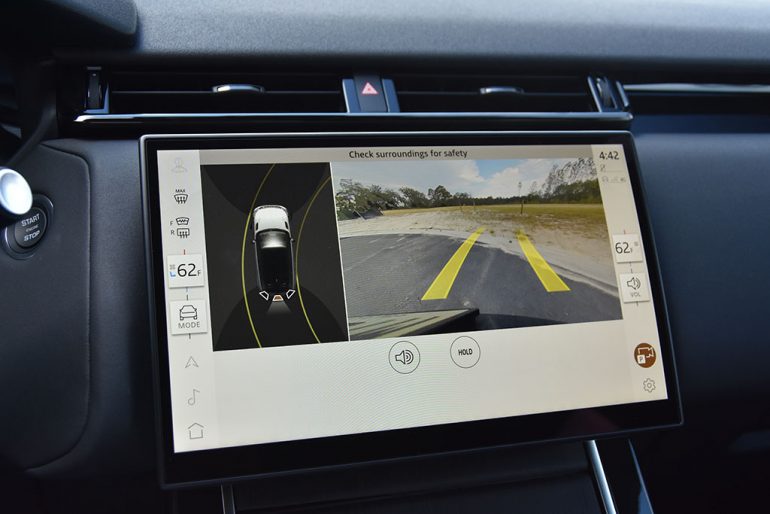
The Land Rover Range Rover Velar starts at $61,500 for the 2.0L P250 Velar S trim. From there, you have two additional trim levels: the Velar Dynamic SE that you can configure with the turbo 4-cylinder or turbo 6-cylinder starting at $63,600, and a top-end Velar Dynamic HSE that only comes with the turbo 6-cylinder starting at $84,795 – all before any fees or additional options. My nicely equipped Range Rover Velar Dynamic SE P400 test vehicle comes to a price of $79,933.

Malcolm Hogan is the founder and editor of Automotive Addicts, a trusted voice in the automotive media world for over two decades. With 20+ years of hands-on experience covering the industry, Malcolm has built a reputation for delivering honest reviews, sharp insights, and in-depth coverage of everything from new car debuts to high-performance test drives. Passionate about the evolving car culture and staying ahead of the curve, Malcolm continues to lead Automotive Addicts as a go-to destination for enthusiasts and industry insiders alike.